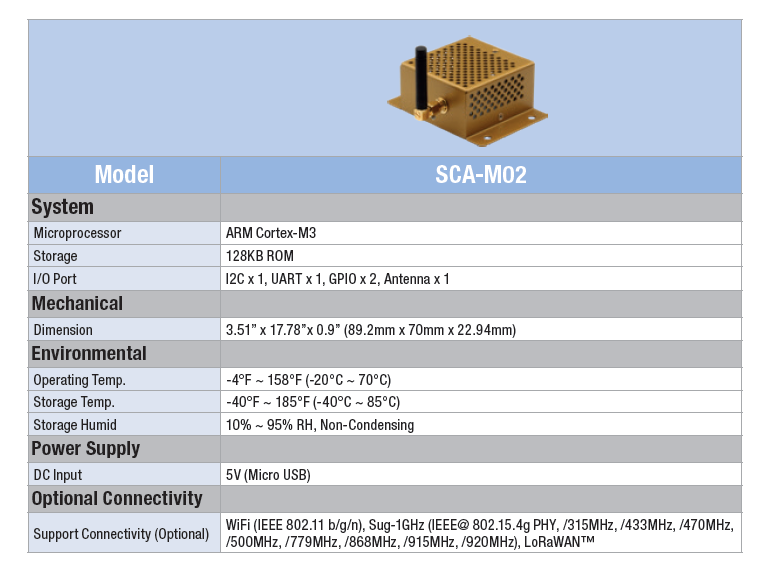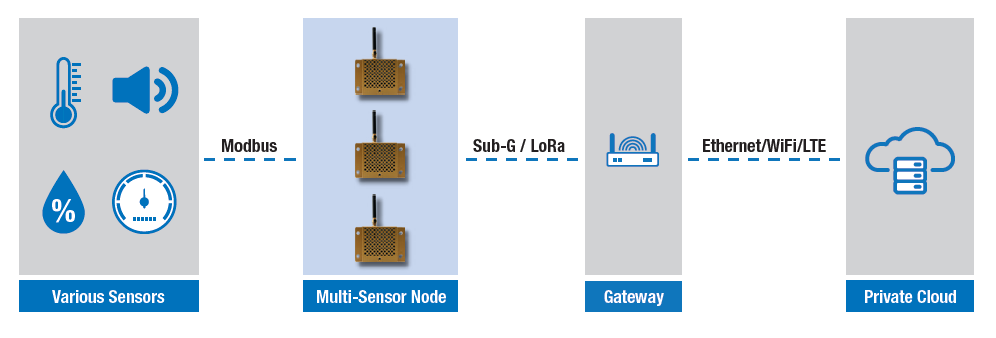Multi-Sensor Node

Introduction
Wireless Sensor Networks (WSNs) use independent sensors deployed throughout a coverage area connected to a central console or cloud server to provide monitoring of physical or environmental conditions such as temperature, humidity, light, sound, air pressure, contamination, noise level, vibration, etc. WSNs can include hundreds or even thousands of sensors and sensor nodes which are connected to and communicate with each other through a wireless network environment.
A sensor node is a device within a WSN capable of performing some processing, gathering sensory information, and communication with other connected nodes. Sensor nodes not only provide the link between sensors and the WSN, but also act to connect other nodes to the network and network gateway. Multi-Sensor Nodes connect with multiple external sensors and provide onboard sensor data collection. Multi-Sensor Nodes help reduce the complexity of WSNs as well as time and cost involved in deploying a WSN.
Benefits
• Low power consumption
• Compact size, easy installation
• Supports Modbus and LPWAN (Sub-G/LoRa)
• High data security

System Architecture

